Media
Summary
Theoretical physicists have found a way to possibly detect primordial black holes which could lead to answers about dark matter and maybe even the existence of a multiverse. Plus the age of the Universe, a wobble in Mars’ axis, and that pesky candidate signal from Proxima Centauri.
Transcript
This is the Daily Space for today, Tuesday, January 5, 2021. I am your host, Dr. Pamela Gay.
And I am your host, Beth Johnson.
And we are here to put science in your brain.
There are a lot of times when I read theory papers and think, “That’s a lot of math and nothing I can test with a telescope.” Going into this next story, I was fully prepared to discard it as something completely untestable, but, it turns out, a team of theorists figured out how we may be able to detect tiny black holes left over from the universe’s formation.

For roughly the first 400,000 years of our universe, everything was more or less a hot soup of stuff like atomic nuclei, free electrons, and light that was constantly interacting as our small universe expanded and cooled. Then, one day, it cooled enough that the electrons and atomic nuclei could come together as neutral matter and the light could fly away as the Cosmic Microwave Background (CMB). That neutral stuff? That stuff became stars and galaxies through gravitational collapse.
This wasn’t a completely smooth distribution of material, and places, where there was a bit more material than the surroundings, formed galaxies. And according to some theories, the rare spots that contained 50% more material than their surroundings collapsed down into tiny black holes — objects the mass of the moon with event horizon the size of a grain of sand.
Now, if Stephen Hawking was correct and black holes evaporate, then all these tiny black holes should have puffed out of existence billions and billions of years ago. If they didn’t however, they could still be out there, floating among the stars.
Detecting a grain of sand in the vastness of space seems like it should be an impossible feat, but a remarkable instrument on the 8.2-m Subaru Telescope in Hawaii may be able to do it. The Hyper Suprime-Cam has a massive field of view that is so high resolution that it can observe one hundred million stars in the Andromeda Galaxy simultaneously. And it can do it fast, taking new images every few minutes.
Theorists at The Kavli Institute for the Physics and Mathematics of the Universe in Japan believe that if there are primordial black holes out there, they should periodically pass in front of these stars and change how we see their light. Mass can act as a lens, bending light, and like a magnifying glass focusing sunlight on a blade of glass, mass can make distant things appear brighter if you are at just the right place.
If a primordial black hole passes exactly between us and one of those one hundred million stars, we will be in the right place, and we will see that star get brighter and fainter in a special way that is unique to these gravitational lenses. And they may have already seen one.
In a new paper in Physical Review Letters, the team discusses an event that occurred during their first set of observations that is consistent with one of those moon-massed, grain-of-sand sized primordial black holes. If more of these detections are made and they are consistent with a population of primordial black holes, well these folks will likely get a Nobel Prize. We’ll have a new intriguing candidate for dark matter, and there are also new possibilities for multiple universes existing.
But that is a story for another day and another show. Expect to see this covered on Astronomy Cast at some point in the not too distant future.

A team of astronomers using the Very Long Baseline Array observed galaxy PSO J0309+27 and captured previously unseen detail in the jet of material being ejected. This galaxy is what is known as a blazar, which is an active galaxy whose jets are pointed in the direction of our solar system. This blazar happens to be the brightest radio-emitting one seen at such a distance — 12.8 billion light-years away. At that point in time, our universe was less than a billion years old.
The brightest part of the radio transmission is at the bottom right of the image, where the galaxy’s core is located. The jet then extends up to the left from the core, propelled by the supermassive black hole’s gravitational energy. The jet becomes thinner and less bright, as seen in the image, and the entire length is about 1600 light-years. Incredibly, you can see some structure within the jet.
The galaxy and its jet were observed by the team in April and May of last year, and the observations may help us understand the rarity of blazars in the early universe. The full paper may be found in Astronomy & Astrophysics, and you can see the image on DailySpace.org.
As much as we’ve so far been able to learn about how our early universe evolved, we still aren’t really sure how long the process took. Currently, there are two camps: those that look at the Cosmic Microwave Background and put the universe at 13.8 billion years with a nice slow 67 km/s/Mpc expansion, and those that look at supernovae and gravitationally lensed distant quasars and get an expansion of a zippy 74 km/s/Mpc, which implies a younger age. Since one of these camps looks at the first light of the universe and the other looks at the light from the past 11 billion years, it’s entirely possible that there is some physics that happens that we just don’t know that causes this discrepancy. Since no one wants to be wrong, however, teams keep doing new measurements and saying, no, we’re right.
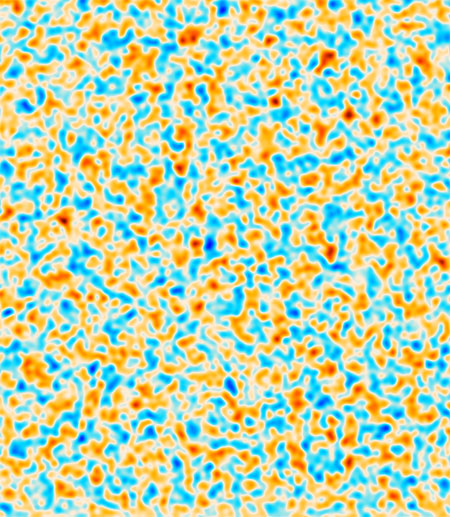
In recent news, we have confirmation of the Planck satellite’s measurements of the CMB that were made using the Atacama Cosmology Telescope to also look at the CMB. This work was led by Steve Choi and appears in the Journal of Cosmology and Astroparticle Physics.
We also have news from gravitational wave astronomers admitting their data has enough inconsistencies that their measurements are consistent with both camps. This work appears in Physical Review Letters and is led by Hsin-Yu Chen. Meanwhile, the supernova and gravitational lens groups are consistent with each other and plugging away to demonstrate their accuracy even more.
Bottom line, we don’t know how old the universe is other than to say it is old, and if anyone tells you they know, ask them to explain both data from the first light and more recent light. If they can’t, they don’t actually know how old the universe is.
Now we’re going to bring it all back down to Earth — or rather Mars — as we look at amazing new data about the red planet.
Mars is an exceedingly complex world, and understanding what forces have shaped its surface requires detailed image data. The Mars Reconnaissance Orbiter spent over a dozen years imaging Mars at five meters per pixel, and in 2018 the Murray Lab at Caltech released their first nearly global mosaic of these seemingly countless images.
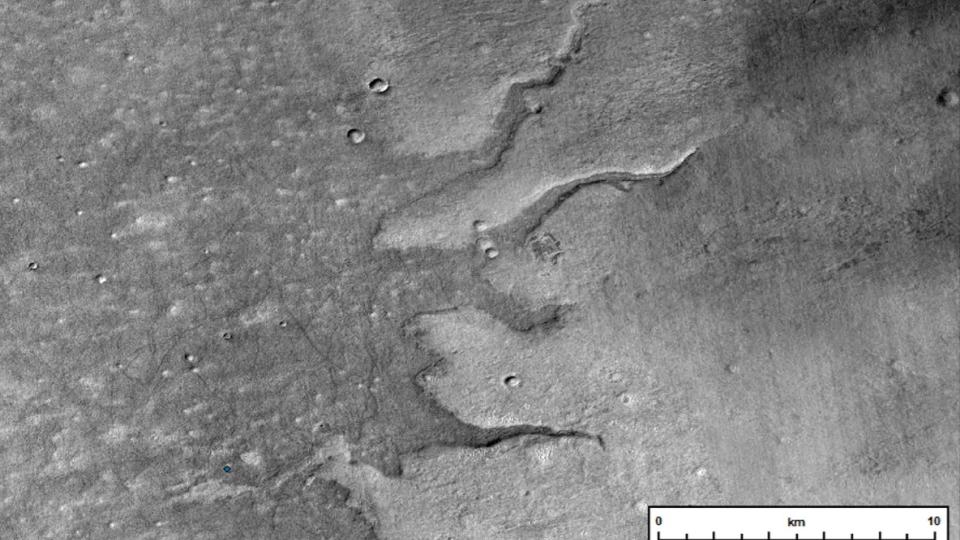
The images came from MRO’s Context Camera, and when combined into a single eight-trillion pixel map, they make it possible to trace out river features, lava flows, and more. Now, roughly two years later, this mosaic has produced the first global study of riverways and deltas on Mars. Published in the journal Geology, this work, led by JL Dickson, traces riverways from their source through to their depositional ridges.
We’re all used to seeing the valleys carved by rivers as they flow across the landscape. What we so often forget about is that all that removed rock had to end up somewhere. Here on Earth, we can see ridges left where dried out rivers ended. The most spectacular are in deserts like Death Valley, in California, and in Chile’s Atacama Desert.
Today, all of Mars is either desert or ice, and scientists had previously been able to locate some ridges in regional data. With this global mosaic, eighteen new ridges, running as much as 100km long, were found. These ridges are large — each with a width greater than 70 meters or more than half a football field — and demonstrate that Mars once had great rivers. Unfortunately, that once was long long ago. Martian rivers appear to have run 3-4 billion years ago and then dried completely as the Martian atmosphere escaped into space. Mars is a changing world in every way.
One of the ways in which Mars changes is similar to one of the ways the Earth changes — Mars’ axis wobbles.
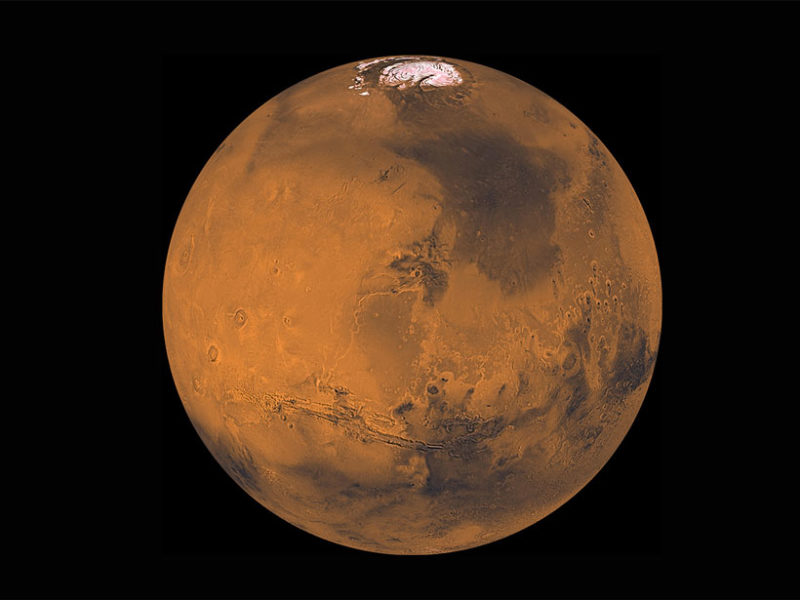
Known as the Chandler wobble, these tiny shifts or wiggles change where the axis of a planet points, when that planet isn’t a perfect sphere. We know Earth is an oblate spheroid, meaning that our planet bulges around the equator due to the Earth’s rotation. And the wobble is similar in effect to how a top sways as it loses speed during its spin. In the case of Earth, that wobble is about 3 to 6 meters; on Mars, only about 10 centimeters.
These new measurements are the results of almost two decades’ worth of data collection on gravitational effects by NASA’s Mars Odyssey and Mars Reconnaissance Orbiter. Per the article: The large quantity of data, collected over 18 years and not available during earlier analyses, ensured that the identified wobble was intrinsic to the planet’s shape and interior, rather than outside factors like seasonal melting of polar ice caps.
So why doesn’t the Earth’s wobble slow down with the wobble like a top? The motion should dampen, but instead, it persists due to the fluctuations in our ocean bottom and atmospheric pressure. We don’t yet understand why the wobble persists on Mars, but this newfound Chandler wobble may provide us insight into the interior of the red planet, particularly how the mantle deforms over longer periods of time since the motion is driven by the properties of that mantle. The full paper can be found in Geophysical Research Letters.
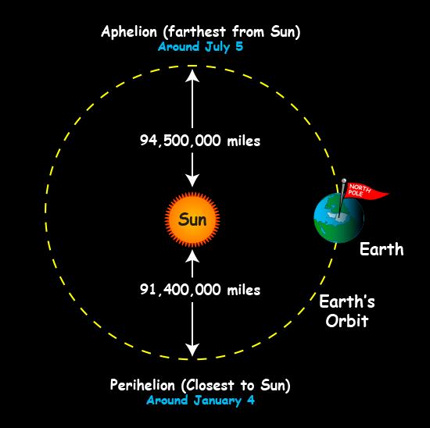
Speaking of planetary tilt, the northern hemisphere is finally getting longer days, and as bad as winter may seem, I’d like to let you know it could be worse. It turns out, the northern hemisphere has an ever so slightly less frigid winter thanks to a trick of geometry.
Each year, at the beginning of January, Earth has its closest approach to the Sun, bringing us a tiny bit of extra light. This year, the closest approach, or perihelion, occurred on January 2. Now, we are on the retreat from the Sun, but since there is only a small difference between our closest and farthest distance from the Sun, the tilt of the planet is the thing setting our seasonal thermometer.
Right before I went on vacation and we took our winter hiatus, news leaked that the Breakthrough Listen project had found their first candidate signal in their search for extraterrestrial life. The headlines went a little wild, and of course, my other job dealt with a bit of the fallout. Keep in mind that we’re covering this story because it was newsworthy, but the papers aren’t published, yet.

The signal was found in archival data from 2019 and came from radio emissions from basically Proxima Centauri, only 4.2 light-years away. The expectation, because scientists aren’t optimistic on this front, is that we will find a somewhat terrestrial source for the signal. But that source hasn’t been found, yet. Andrew Siemion, Breakthrough Listen’s principal investigator, said: It has some particular properties that caused it to pass many of our checks, and we cannot yet explain it.
The signal was found in data from the Parkes Observatory in Australia while the telescope was studying Proxima Centauri. It’s a narrow-beam signal around 982 MHz, which is narrower than what we usually observe from human-made satellites and spacecraft. There is also an intriguing drift to the signal, and that mimics what we see when planets are in motion and giving off their own signals. However, the signal could be coming from a traveling spacecraft of our own design.
As Seth Shostak of the SETI Institute wrote: With the large volume of space technology orbiting the Earth and beyond, it can be extremely challenging to pinpoint which signals may be non-human-made.
The signal needs to be re-observed before any conclusions can be made. So it’s still not aliens. But it’s not NOT aliens.
Finally, we bring you a fascinating little bit of astronomy history. Have you ever looked up at the Pleiades? Or seen pictures? The asterism is also called the Seven Sisters. So why do we only see six stars?
In Greek mythology, the seven sisters were daughters of Atlas, who was being punished by Zeus for, well, being a Titan, and Atlas had to hold up the sky. To protect the daughters from the evil machinations of Orion the hunter, Zeus transformed them into stars, but one ran away to be with a mortal. Hence, six stars.
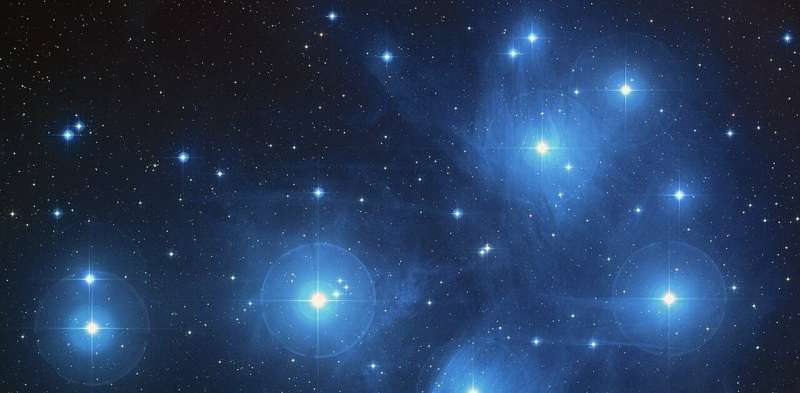
There’s a similar story found in Australia among Aboriginal groups. Still young women, important in women’s ceremonies and stories, still being hunted by their version of the Orion constellation. There are variations in why the seventh sister is missing, but there is always an explanation.
How do two disparate cultures have such similar explanations for an astronomical story? It turns out that this story reappears in culture after culture, and astronomers and anthropologists alike wanted to understand why.
Modern humans descend from people who lived in Africa, and the story possibly migrated from there outward early on and changed with the retelling while keeping the major elements the same. That’s the anthropological explanation. The astronomical explanation is that 100,000 years ago when humanity was still in Africa, the stars Pleione and Atlas were actually separated to the naked eye, but everything moves, and now they look like one star.
The data for this explanation came from measurements done with the Gaia space telescope, and I personally think that it’s a fascinating story all around.
This has been the Daily Space.
Learn More
Theorists Search for Primordial Black Holes
- Kavli IPMU press release
- “Exploring Primordial Black Holes from the Multiverse with Optical Telescopes,” Alexander Kusenko et al., 2020 October 30, Physical Review Letters
A Blazar in the Early Universe
- NRAO image release
- “Parsec-scale properties of the radio brightest jetted AGN at z > 6,” C. Spingola et al., 2020 November 11, Astronomy & Astrophysics
The Universe is Nearly 14 Billion Years Old
- Cornell University press release
- “The Atacama Cosmology Telescope: a measurement of the Cosmic Microwave Background power spectra at 98 and 150 GHz,” Steve K. Choi et al., 2020 December 30, Journal of Cosmology and Astroparticle Physics
The Uncertainties in Measuring Cosmic Expansion
- Center for Astrophysics article
- “Systematic Uncertainty of Standard Sirens from the Viewing Angle of Binary Neutron Star Inspirals,” Hsin-Yu Chen, 2020 November 12, Physical Review Letters
Fluvial Mapping of Mars
- The Geological Society of America press release
- “The global distribution of depositional rivers on early Mars,” J.L. Dickson et al., 2020 December 21, Geology
Mars’ Axis Wobbles
- Eos article
- “Detection of the Chandler Wobble of Mars From Orbiting Spacecraft,” Alex S. Konopliv et al., 2020 October 13, Geophysical Research Letters
Earth at Perihelion on 2 January 2021
Breakthrough Listen Finds First Candidate Signal
The Pleiades: An Anthropological and Astronomical Mystery
Credits
Written by Pamela Gay and Beth Johnson
Hosted by Pamela Gay and Beth Johnson
Audio and Video Editing by Ally Pelphrey
Content Editing by Beth Johnson
Intro and Outro music by Kevin MacLeod, https://incompetech.com/music/


 We record most shows live, on Twitch. Follow us today to get alerts when we go live.
We record most shows live, on Twitch. Follow us today to get alerts when we go live.